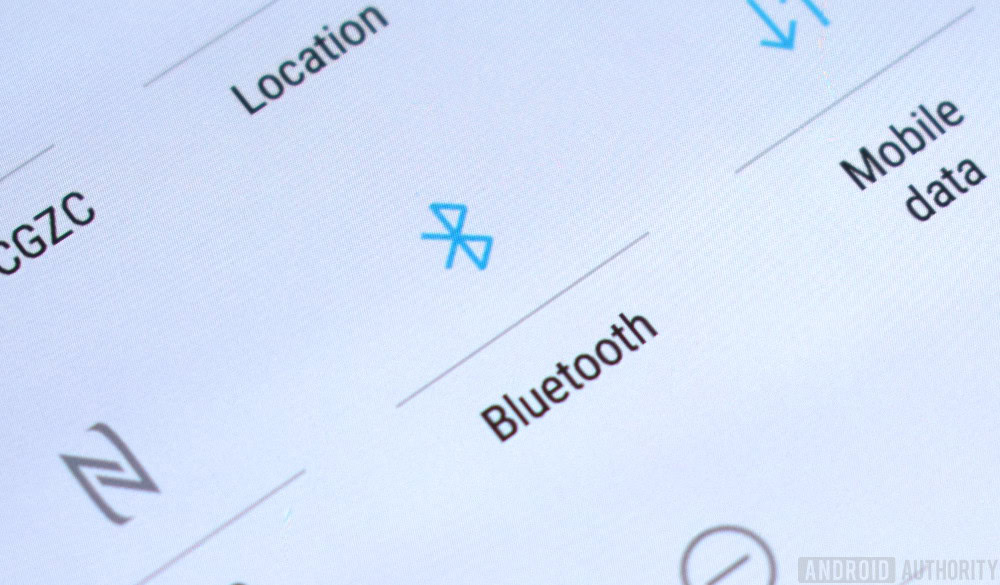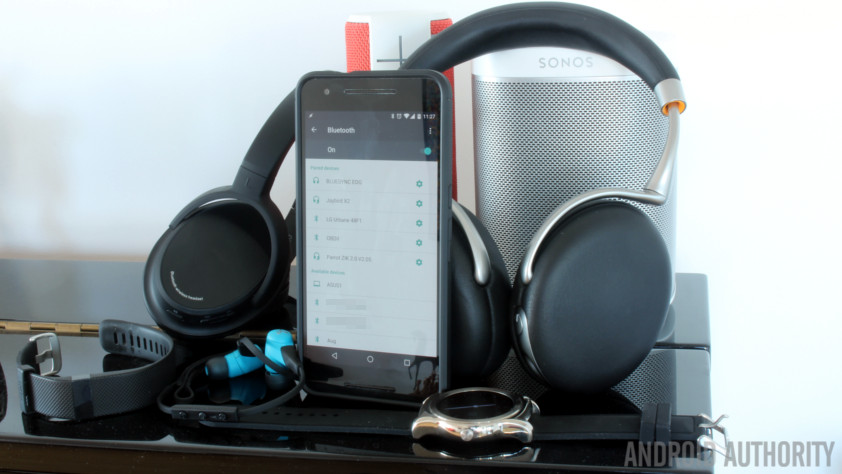
There’s a good chance Bluetooth technology is a regular part of your mobile experience these days. It covers everything from audio for wireless headphones and speakers, pairing gaming controllers and keyboards, tethering internet connections, and even occasionally transferring files over the air. It’s a feature that gets more useful every year, which is pretty remarkable considering how relatively limited its scope was when it was created over 20 years ago.
The Bluetooth standard was originally conceived by Dr. Jaap Haartsen at Ericsson back in 1994. It was named for a renowned Viking and king who united Denmark and Norway in the 10th century. At the time, it was designed to replace RS-232 telecommunication cables, a much older standard conceived in 1960, by using short range UHF radio waves between 2.4 and 2.485 GHz. Although this occupies very similar frequencies to Wi-Fi, Bluetooth has always been designed as a much shorter range and lower power alternative.
Bluetooth was invented back in 1994, but the first Bluetooth phone didn't hit shelves until 2001.
In 1988 the Bluetooth Special Interest Group (SIG) was formed, which to this day publishes and promotes the standard and its subsequent revisions. Bluetooth SIG initially only included Ericsson, IBM, Intel, Nokia, and Toshiba, but reached 4,000 members by the end of its first year. The group now contains over 30,000 member companies at various levels of influence.
The first consumer Bluetooth launched in 1999. It was a hands-free mobile headset which earned the technology the “Best of Show Technology Award” at COMDEX. The Bluetooth 1.0 specification also officially launched that year, leading to the release of the first Bluetooth-equipped chipsets, dongles, mice, wireless PC cards, and mobile phone in 2000. The first Bluetooth mobile phone was the Sony Ericsson T36, but it was the revised T39 model which actually made it to store shelves in 2001. It offered customers a 101 x 54 Monochrome LCD display, tri-band GSM connectivity, WAP internet, and enough memory to store up to 1,000 contacts.

The early standard
Right out of the gate, Bluetooth 1.0 was equipped for a wide variety of uses. The RS-232 standard was widely used as a computer serial port, catering to internet modems, printers, mice, data storage, and a host of other peripherals. As its proposed replacement, Bluetooth was designed as a flexible packet-based protocol with a wide selection of profiles to suit these applications and more. RS-232 was also rather power-hungry for a physical connection, so Bluetooth was made to require much less power.
This first version wasn’t without problems. Anonymity was an issue due to compulsory address broadcasting. There were connection problems aplenty. The 1.0 specification offered peak data speeds of just 721 kbps and connections couldn’t reach much farther than 10 meters. Once you factored in real world performance, longer range connection quality, and the rather hefty header packets, the actual data rate available to applications was notably slower. The standard originally came with profiles for wireless voice and headsets, dial-up networking, fax, and file transfers, but this has expanded substantially since then.
Probably the most common use for Bluetooth in modern products is audio, yet the original standard was never designed for anything close to full bandwidth music. 721 Kbps is enough for a good compressed voice codec, even once you discount the header overheads and diminishing real world speeds at distance, but such limited bandwidth couldn’t hope to cater to anything close Hi Res audio today or even CD quality at the time.
Bluetooth was originally conceived with wireless voice calls in mind, but not high quality stereo music streaming.
The introduction of the A2DP profile mandated the use of the SBC audio codec as a minimum, rather than enforcing the direct transfer of other audio standards like mp3, mwa, and aac, even though these are supported. As a result, Bluetooth audio suffered from poor quality, and no core revisions to the specification have remedied this long-running problem.
Even the introduction of the Enhanced Data Rate for up to 3 Mbps didn’t address the issue, as it’s an optional component of the specification. Third party codecs like aptX and LDAC use higher bitrates and better compression methods, but Bluetooth remains a bottleneck for top quality wireless audio, despite its growing popularity.

Revisions compared
Bluetooth isn’t just about audio though, and the specification has undergone numerous revisions since 1999 to improve the standard’s data speeds and connection quality, feature set, and to help accommodate new use cases and markets. Most recently, Bluetooth SIG has been focusing on mesh networking, lower energy profiles, and longer range for IoT. In summary, the standard is faster and more secure, with more features than ever before.
Even so, Bluetooth’s core capabilities have never been completely overhauled, to keep the platform as backwards compatible as possible. There have been lots of additions and improvements to the specification with each revision, ranging from new protocols and transmission modes, but the core data rate remains at 1 Mbps and the majority of legacy profiles remain active.
The most notable (optional) additions to the specification include the Enhanced Data Rate for up to 3 Mbps in version 2.0, High Speed transfers over Wi-Fi using Bluetooth pairing in version 3.0, and the introduction of Low Energy in version 4.0. The table below shows when these major features were introduced, and how typical use cases for speed and range have evolved over time.
| Bluetooth 1.0 (1999) |
Bluetooth 2.0 + EDR (2004) |
Bluetooth 3.0 + HS (2009) |
Bluetooth 4.0 + LE (2013) |
Bluetooth 5 (2017) |
|
|---|---|---|---|---|---|
| Max Connection Speed | 0.7 Mbps | 1 Mbps core 3 Mbps with EDR |
3 Mbps with EDR (24 Mbps over 802.11 link) |
3 Mbps with EDR 1 Mbps Low Energy |
3 Mbps with EDR 2 Mbps Low Energy |
| Typical Max Range | ~10 m (33 ft) | ~30 m (100 ft) | ~30 m (100 ft) | ~60 m (200 ft) | ~240 m (800 ft) |
Honestly this way of looking at Bluetooth isn’t really relevant to where the standard has been heading for the past few years. Rather than evolving in a single path, aiming for faster data speeds and longer range, the standard has increasingly split into Low Energy and Classic segments since version 4.0. Low Energy is tailored towards burst-like communication, like what’s used by fitness trackers and internet-of-things products. Classic continues to provide a higher data rate for products requiring a constant connection.
The latest Bluetooth 5 revision continues down this path, splitting its improvements for Classic and Low Energy. This update places a heavy emphasis on boosting the range and data rate of its low energy and long range options, rather than revamping the classic protocol used by products like headphones.
There is also an equally wide selection of radio power options that offer ranges varying from very short to over 100 meters, and these aren’t locked to any particular standard. The table below is a better representation of how Bluetooth standards are formulated today.
| Low Energy (LE) | Classic Basic Rate & EDR | |
|---|---|---|
| Channels | 40 channels with 2 MHz spacing | 79 channels with 1 MHz spacing |
| Data Rate | BLE 5: 2 Mbps BLE 4.2: 1 Mbps BLE 5 Long Range (S=2): 500 Mbps BLE 5 Long Range (S=8): 125 Mbps |
EDR (8DPSK): 3 Mbps EDR (π/4 DQPSK): 2 Mbps Basic Data Rate: 1 Mbps |
| Power & Radio Profiles | Class 1: 100 mW (+20 dBm) Class 1.5: 10 mW (+10 dbm) Class 2: 2.5 mW (+4 dBm) Class 3: 1 mW (0 dBm) |
Class 1: 100 mW (+20 dBm) Class 2: 2.5 mW (+4 dBm) Class 3: 1 mW (0 dBm) |
| Power Consumption | ~0.01x to 0.5x of Classic | Based on radio class. |
| Network Topologies | Point-to-Point (including piconet) Broadcast Mesh |
Point-to-Point (including piconet) |
Wrap up
Over the past two decades, Bluetooth has evolved from a wireless replacement for old RS-232 cables to a fully fledged, far-reaching standard in its own right. It caters to everything from file sharing and device pairing, to wireless music and accessories. Today, the standard is perhaps facing its biggest fork yet, with a dual focus on retaining backwards compatibility while also powering increasingly low energy IoT devices and broad communication mesh networks. This definitely wasn’t envisioned in the original specification.
Despite its limitation, the flexibility of this particular wireless standard has been its greatest asset. Estimates suggest as many as 10 billion Bluetooth devices will have shipped worldwide by the end of 2018, and Low Energy equipped devices look set for exponential growth, which means Bluetooth will stay a key driving factor not only in smartphones, but across countless technology market. Not bad for something from twenty years ago.
from Android Authority http://ift.tt/2pzmgod



No comments:
Post a Comment